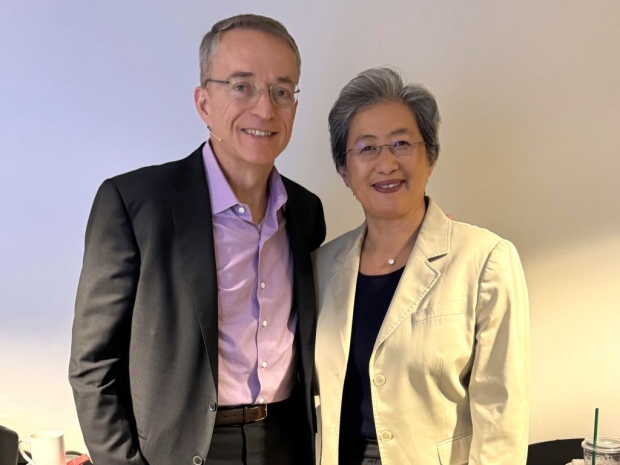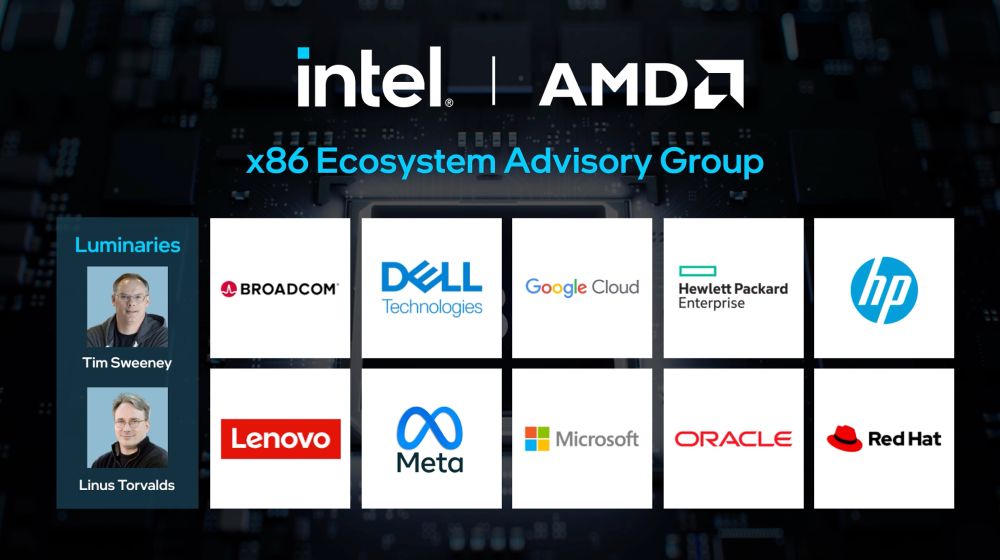
Intel and AMD working together
In a surprising move, Intel and AMD CEOs announced the formation of the x86 Ecosystem Advisory Group. The traditionally fierce rivals have decided to join forces to advance the x86 ecosystem and bring consistency and compatibility to the x86 architecture across their products.
We had a chance to speak with Jeff McVeigh, the general manager of x86 Ecosystem and Custom Products at Intel in the Data Center and AI group, and Robert Hormuth, corporate vice president of Architecture and Strategy in the Data Center Solutions Group at AMD.
Previously, it seemed that Intel was leading the x86 architecture development, with AMD adapting to those changes. The Advisory Group helps AMD gain a more equal footing moving forward, but more importantly, it provides partner companies with an easier way to express their needs and desires.
Intel and AMD cooperation has historically led to important standards such as PCI, PCIe, ACPI, and USB. Some big names will join the advisory group, including (in alphabetical order) Broadcom, Dell, Google, Hewlett Packard Enterprise, HP, Lenovo, Microsoft, Oracle, Red Hat, and others.

The key goal is a united front that will shape the future of x86. The rise of ARM and Nvidia likely served as a catalyst for this alliance. The advisory group includes industry leaders like Linus Torvalds, Tim Sweeney, and representatives from major tech companies. Apple, considering its relationship with Tim Sweeney and Epic Games, will likely be watching this development closely.
Enhance developer innovation
One goal of the cooperation is to enhance developer innovation and accelerate technology adoption by unifying instruction sets and architectural interfaces across the x86 family. When asked, both McVeigh and Hormuth acknowledged the possibility of new instruction sets in the future but emphasized that this is a very early stage of cooperation.
Interestingly, both companies underlined that they will remain fierce competitors but will collaborate on defining consistent x86 implementations through this group. They are, in essence, “frenemies.”
The advisory group will provide feedback and recommendations, while Intel and AMD will independently implement the agreed-upon features. If a stalemate arises, the decision process can escalate to the CEO level (Pat Gelsinger at Intel and Lisa Su at AMD), where a final decision is expected.
The first in-depth meeting of the advisory group is planned for January 2025, with quarterly meetings thereafter. Despite being CPU-centric, the group may explore collaboration opportunities in areas like compilers in the future. The group is expected to expand its membership over time.